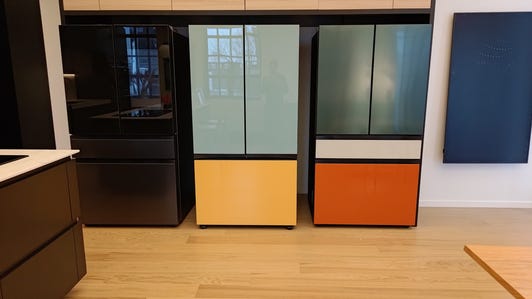Technologies
Asus ROG Phone 6 Pro: $1,300 Phone Maxes Out Everything but the Camera
This high-priced gaming phone puts power and style at the front, with plenty of ideas I’d love to see in mainstream phones.
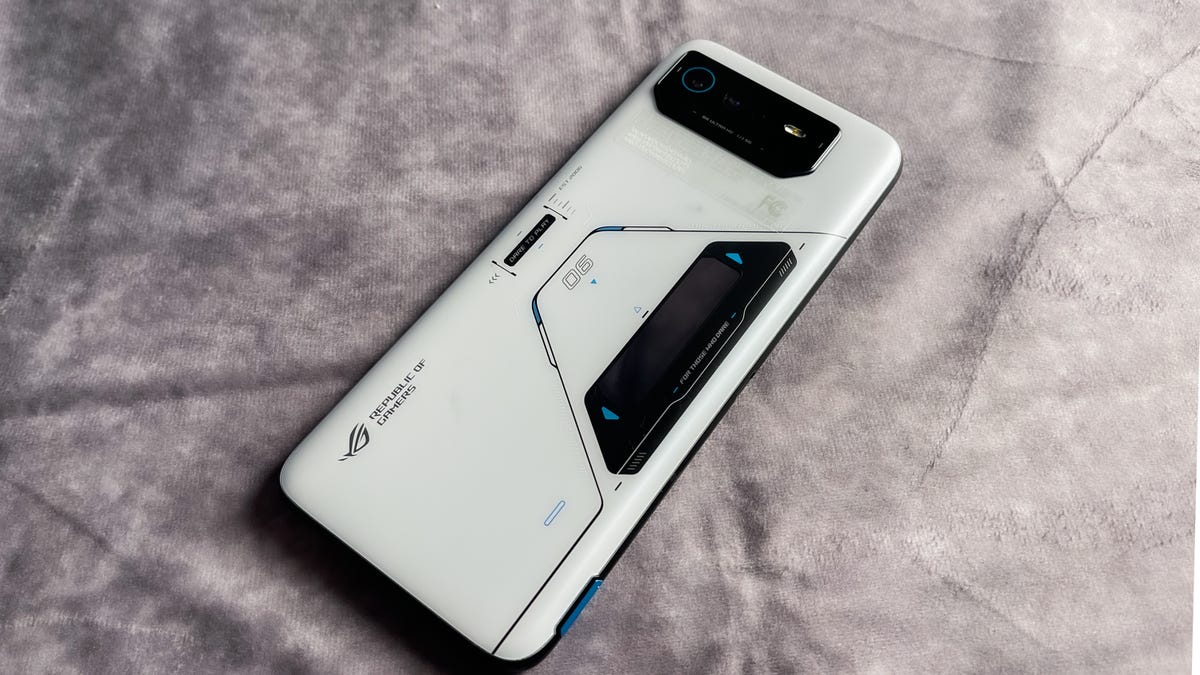
The Asus ROG Phone 6 Pro is a $1,300 gaming phone behemoth. Released last summer, the phone justifies its high price with more premium specifications that offer more power and style than the average phone. This includes the phone’s 6.78-inch OLED display with a 165Hz refresh rate, a 6,000mAh battery and a colorful second LED display on the back that adds a dynamic look to the rear of the phone.
I’ve been using the Phone 6 Pro for the last few months — testing it both as a gaming device and as an everyday phone. While I largely enjoy using the Phone 6 Pro, some of the choices Asus made for gamers do not necessarily benefit a mainstream phone user. There are some design quirks, and the camera isn’t as impressive as it should be for such an expensive device. It’s also missing wireless charging, which may not be a necessity but is considered common on most phones.
But if you can cast aside these shortcomings, the Phone 6 Pro has a number of features that could end up on a future iPhone or Galaxy device. Asus also succeeds at catering to those who want to get the most out of their phone as a gaming device.
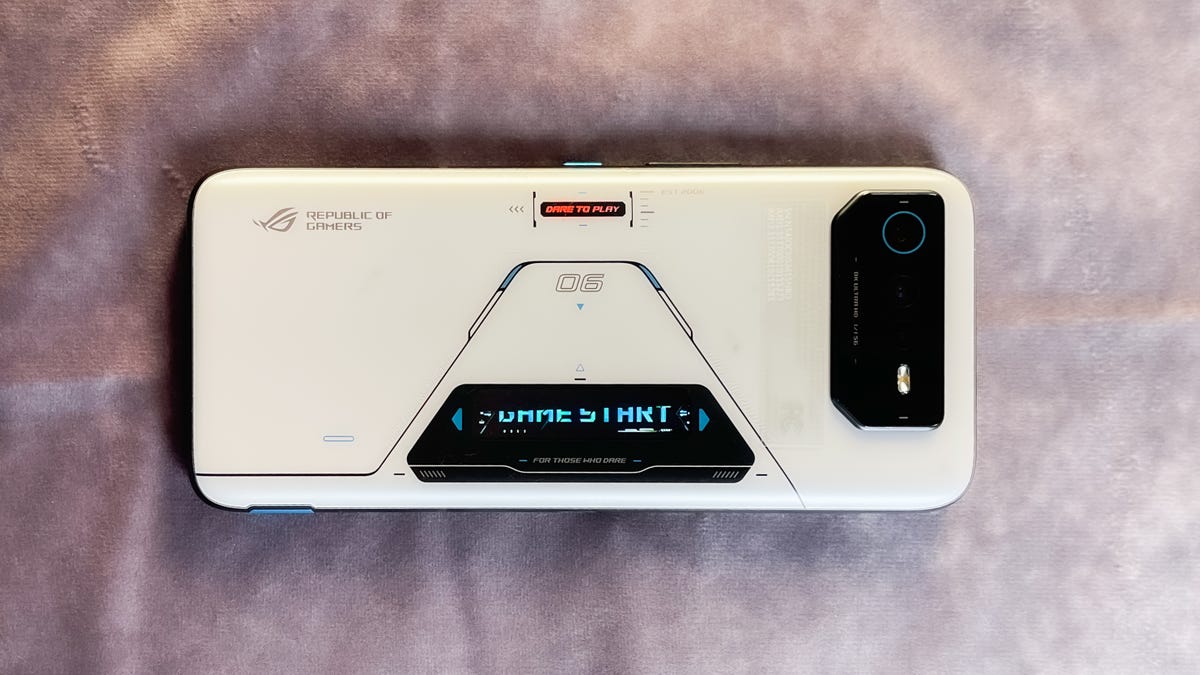

The Asus ROG Phone 6 Pro has a rear LED display that lights up with various animations and notification icons.
Mike Sorrentino/CNETA futuristic design highlighted by a rear LED display
The Asus ROG Phone 6 Pro’s design makes a statement. My review unit is a satellite-like white color that’s adorned with blue accents and a black line that diagonally traces around its LED display.
That rear display reminds me of the notification LED that I used to see on BlackBerry phones, but evolved into something more like the cover screen on a Samsung Galaxy Z Flip 4. The display shows icons for notifications, a Game Start animation (for when you start a game of course), a battery indicator and other animations that you customize within the phone’s settings.
A static LED that outlines the words «Ready to Play» is also on the back of the device to really emphasize that this is a gaming phone. The color of that text can be customized from within the menus.
I would love to see other phones experiment with more artistic colors and designs like Asus. The midrange Nothing Phone 1 is already doing something similar with its Glyph LED design. For now, the closest most mainstream phones get to customization is when you throw on a skin or case.
Yet another design choice to place the phone’s front-facing camera in a bezel above the phone’s display makes sense in order to provide an uninterrupted screen, but that choice is a rather dated idea for a phone this expensive. This makes the phone a little bit taller than the display, which harks back to older designs like 2018’s Samsung Galaxy S9. Gaming phone rival RedMagic now uses an under-display front-facing camera, starting with its 7S Pro, but image quality is still a work in progress on phones giving that a try.
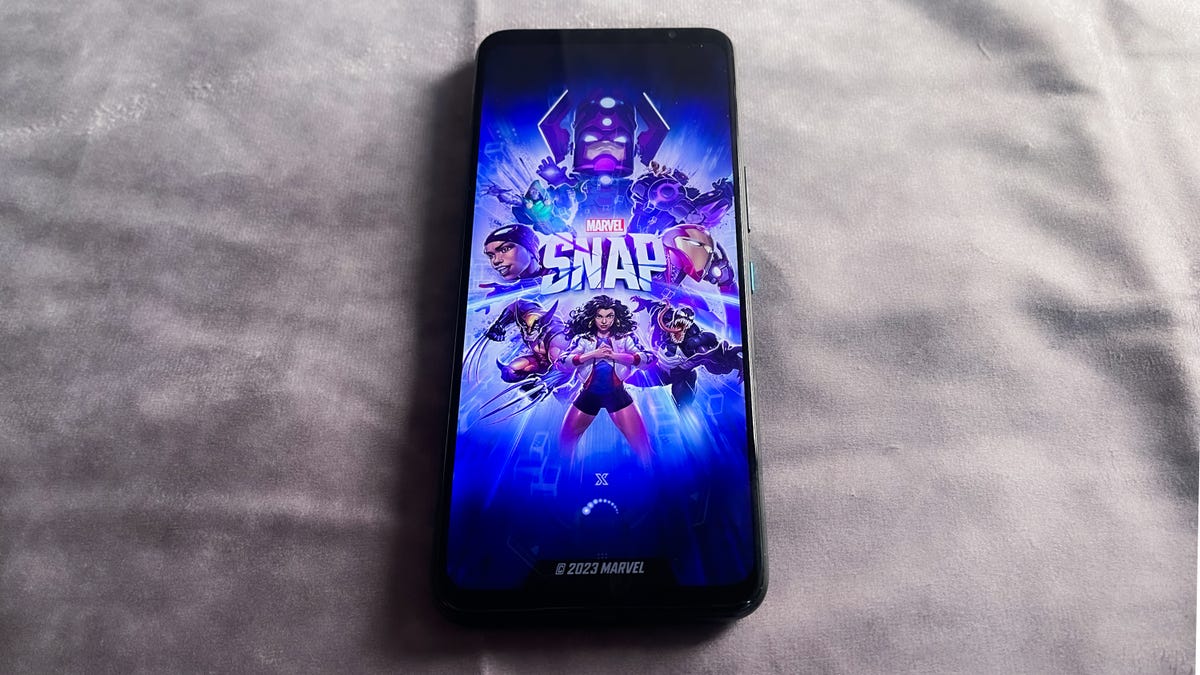

The Asus ROG Phone 6 Pro has a 6.78-inch screen, and chooses to put the front-facing camera within a bezel above the display.
Mike Sorrentino/CNETAsus ROG Phone 6 Pro’s screen animates and reacts fast
As one would expect with an expensive phone, the Asus ROG Phone 6 Pro’s 6.78-inch OLED looked great no matter what type of content I was viewing. By default, it uses an automatic refresh rate that changes depending on what you’re using. After turning on the setting that keeps it at 165Hz at all times, I was able to enjoy extremely smooth scrolling, gaming animations and reading. While Marvel Snap maxes at 60 frames per second, the card game seemed to animate especially well with all of its graphics settings turned on. The same goes for quickly jumping in and out of Gameloft’s Modern Combat 5 and Warner Bros.’ Mortal Kombat — the latter of which natively supports the 165Hz refresh rate.
The screen also has a 720Hz touch sampling rate, or how quickly the screen reacts to taps and scrolls for games. In my experience, that’s particularly useful for first-person shooters and fighting games.
This isn’t the first time I’ve seen a 165Hz refresh rate or a 720Hz touch sampling rate; last year’s $629 RedMagic 7 phone also includes those features. But features like these are starting to make their way into more mainstream devices at lower prices. Motorola’s $500 Edge phone from last summer, for instance, has a display with a 144Hz refresh rate. I’m expecting these higher frame rates to continue reaching mainstream phones and perhaps pushing even higher on gaming phones, a trend that we’re also seeing on some televisions and computer monitors.
The 720Hz rate is still largely found on gaming phones, but the Samsung Galaxy S23 does have a 240Hz touch sampling rate that is more than adequate outside the competitive gaming space.
Two front-facing speakers are located around the display, which is especially useful as it’s less likely that your hands will cover them while playing games. Plus, the phone has a wired headphone jack, making it one of the very few phones to still include the port. Having the option makes a lot of sense, since it allows for hardwiring into the phone for audio while using the USB-C port for charging. A second USB-C port on the phone is also available for accessories.
Asus ROG Phone 6 Pro has one of the biggest batteries I’ve seen
The Asus ROG Phone 6 Pro packs one of the largest batteries I’ve seen on a phone, with a 6,000mAh capacity. The closest we’ve otherwise seen in readily available phones like the Galaxy S23 Ultra is 5,000mAh. Even when I cranked up the refresh rate to 165Hz and turned on the phone’s always-on display, I made it through an entire day or two with a single charge fairly easily. I did not run all of CNET’s battery benchmarks on the Phone 6 Pro, but between the large capacity and support for 65W fast charging, getting the phone through a day isn’t an issue.
Additional battery life is very likely to make its way into more mainstream phones eventually, but currently faster charging already is available in phones like the OnePlus 11 5G. That phone offers 100W charging in the UK and 80W charging in the US.
Asus ROG Phone 6 Pro’s 18GB of RAM is overkill
The phone also includes 512GB of space alongside a ludicrous 18GB of LPDDR5 RAM. Multitasking is a breeze, as it’s able to handle several apps at the same time without lagging at all if I swapped quickly between them.
Games themselves load quickly too, thanks in part to the now previous-gen Snapdragon 8 Plus Gen 1 processor. Hopping into a game, texting, and then launching a website before returning to the game is simple and fast. Whenever I use a gaming phone like the Phone 6 Pro, having this much RAM alongside a fast processor allows me to go into a game’s settings menu and crank up every graphics setting possible, with little worry that it’s going to hurt the performance of the title.
It’s worth noting that 2023 mainstream phones like the Galaxy S23 and gaming phones like the RedMagic 8 Pro are including the new Snapdragon 8 Gen 2 processor, both of which arrived after the ROG Phone 6 Pro.
The large amount of RAM is also one of the areas where the phone’s high price is quite obvious. It is common for phones like the iPhone 14 Pro or the Galaxy S23 Plus to include a 512GB storage tier at the $1,300 price range, but incorporating 18GB of RAM is very unusual. By comparison, this is more RAM than most computers at a similar price range include.
That said, the sheer amount of RAM included in the phone does show that while the Phone 6 Pro spares no expense on specs that help it run fast. It instead cuts corners on photography, which runs quite counter to what we typically see on the mainstream side of the phone industry.
Gaming focus comes at the expense of the cameras
When it comes to the phone’s cameras, photos are generally a weak point despite the inclusion of a 50-megapixel main camera, a 13-megapixel ultrawide camera and a 5-megapixel macro camera.


Beef pho noodle bowl photo captured on the Asus ROG Phone 6 Pro.
Mike Sorrentino/CNETI took photos in several indoor settings, including during a tour of Samsung’s recently reopened 837 store in New York and during a nighttime ice skating session.


Ice skating photo taken on the Asus ROG Phone 6 Pro.
Sean Keane/CNETThe photos are nice, but they aren’t $1,300 phone nice.
I know this is a «gaming phone» and not a «camera phone,» but I still expected more from such a pricey device. Most phones in this price range support more colors and detail, using a combination of a high-quality camera and software to bring out the most of a photo in a variety of situations. Yet the lack of focus in this area is understandable when considering how a rear camera rarely ever becomes a part of most mobile phone games. If camera quality is your concern, consider a Galaxy S23 Ultra, Pixel 7 Pro or iPhone 14 Pro Max.
Asus customizations don’t overwhelm Android
The Phone 6 Pro, which received the update to Android 13 during my time with it, has the right amount of software customization options. The tweaks made by Asus were noticeable, but didn’t get in my way when using the device.
The phone defaults to dark mode, which better compliments some of the Asus settings found in the company’s Armoury Crate app. This app lets you make adjustments to the LED display and game performance.
I appreciate the separation, as sometimes a phone’s settings menu can become overwhelming with options from both Android 13 and the device maker’s specific offerings. I would, however, appreciate some shortcuts from the device settings menu that bring you to the Asus app. There were some occasions when I wasn’t sure how to make certain changes. It wasn’t clear, for instance, how to adjust the rear LED.
As far as actual gaming goes, Asus includes a Game Genie hub that you can access while playing a game by tracing diagonally from the corners of the screen. This brings up a space-themed dashboard with settings for adjusting the device’s refresh rate, allowing or blocking phone calls, screen recording or adjusting the AirTriggers. These are the shoulder button-like sensors on the phone that can be customized for different commands. Gaming mode options like these are great for gaming phones or other high-end phones, but I don’t expect wider adoption: When I reviewed the $228 OnePlus N300, seeing a similar gaming mode on that cheaper phone seemed to give away that it didn’t have as much power to run games at higher graphics settings.
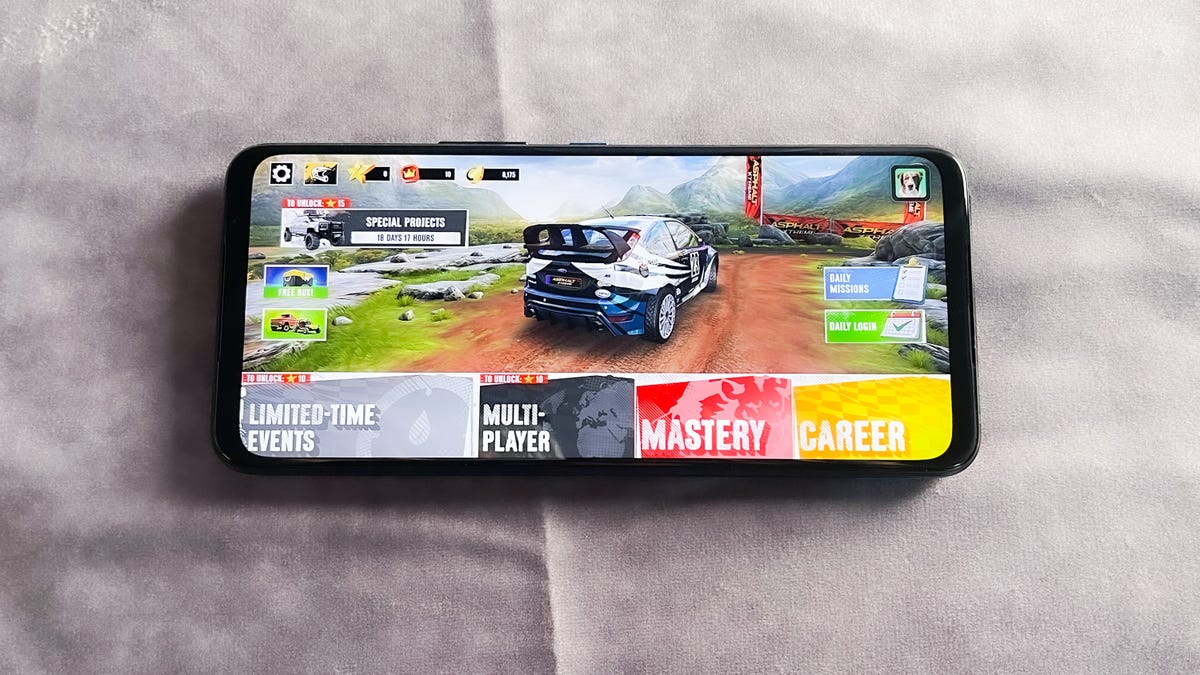

Asphalt Xtreme on the Asus ROG Phone 6 Pro.
Mike Sorrentino/CNETAsus offers a lot, but for a specific gamer audience
The Asus ROG Phone 6 Pro brings a lot of personality to an otherwise niche and expensive device. I appreciate its flourishes — especially the rear LED — and how the phone prioritizes gaming and media consumption over all else. Features like the high-quality display, the rear LED, fast charging, the front-facing speakers and a headphone jack would likely be appreciated by a lot of regular phone users, too.
But Asus makes compromises in other areas, particularly when it comes to the cameras and the lack of wireless charging. While the high touch sampling rate is useful for gamers, it’s not significant enough to make me want it in a standard, non-gaming phone. This is ultimately still a very expensive phone — even for a niche audience. It’s also worth remembering that many of the specs can be found in cheaper options like the RedMagic, even if it’s at the expense of the user experience. But if you really want to have 18GB of RAM and a fancy second screen in your smartphone, be prepared to pay the $1,300.
Technologies
New Apple Watches Are Raising Our Blood Pressure with Their New Features!
Technologies
CNET Debates: Is Apple’s New Crossbody Strap a Great Idea or a Terrible One?
Does the crossbody strap make it more or less likely that you’ll have your iPhone stolen? We have conflicting opinions.
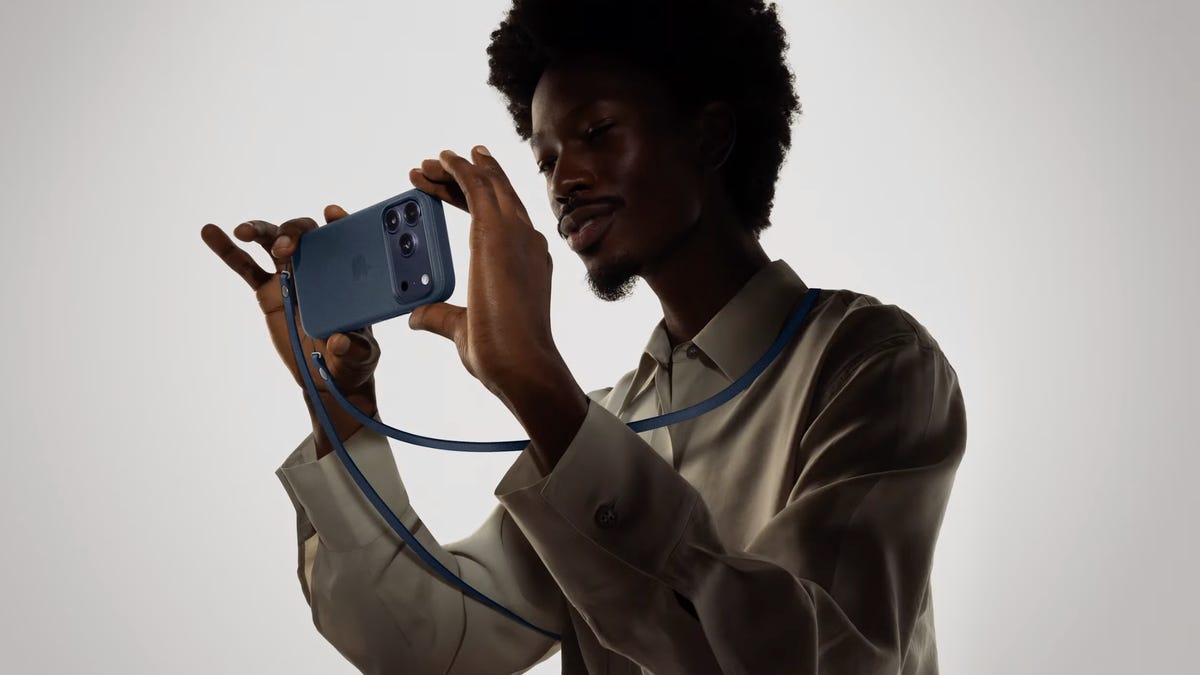
One thing you can be sure of during an Apple event is that it will generate immense quantities of discourse among CNET’s seasoned nerds — and no, we don’t always agree with one another.
Is the iPhone Air totally pointless and uncalled for, or the best design innovation since very thinly sliced bread? Both can be true, depending on whom you ask.
Among the many announcements on Tuesday that sparked conflicting opinions was a crossbody strap for the iPhone. After a back-and-forth in Slack, my colleague Zach McAuliffe and I have decided to put forth our respective viewpoints and allow you to be the judge.
Don’t miss any of our unbiased tech content and lab-based reviews. Add CNET as a preferred Google source.
Great idea: Katie Collins, Principal Writer
Have you ever been walking down the street to meet your friend, navigating using Google maps and texting your pal to let them know you’re running late, when all of sudden: bam! A dude on a moped has whizzed past at high speed and removed your phone from your hand before you’ve even had a chance to realize what’s happened?
In London, this style of phone theft is a daily occurrence, and while it’s never happened to me personally, every time I step foot on the streets of the British capital, I’m immediately wary and vigilant.
Earlier this year, the Guardian reported that survey data from American insurance company SquareTrade showed that 39% of all European phone theft take place in the UK, and that 42% of British phone thefts occur in London. So common is it for your phone to be snatched by someone on a bike or moped that London’s Metropolitan Police issue special prevention guidance, featuring advice such as: «[when using your phone,] stand away from the roadside, close to a building or wall, so no one can come up behind you.»
I get that a crossbody is not a failsafe method to prevent iPhone theft. I would never advise someone to walk around a city in a state of blissful ignorance while their phone flaps hands-free against their body. But I do endorse it as a way to fend off opportunists on two wheels.
I can see other times the crossbody strap would come in handy, too. Frequently on my travels, I find myself on a boat, clutching the railing and taking pictures on my phone as the world passes me by. Always in these situations I’m concerned that just one clumsy slip could see my precious phone go the way of the Heart of the Ocean in Titanic. A crossbody strap would provide peace of mind in such moments to protect me against my own idiocy.
As a clumsy person who dreads having their phone stolen, I will be investing in one of Apple’s crossbody iPhone straps the moment they become available. I personally can only see the benefit in having my phone glued to my body as well as my hand.
Terrible idea: Zach McAuliffe, Staff Writer
When I saw Apple’s new crossbody strap for the iPhone, my first thought was, «I bet someone could cut that real easily and steal someone’s iPhone.»
But surely Apple thought of that and chose a cut-resistant strap made with something like Dyneema, right? Nope. According to Apple, the strap is made of recycled PET (polyethylene terephthalate) yarns. If you’re unfamiliar with this kind of yarn, it’s a synthetic fiber made from recycled plastic bottles.
If you had a razor or something similarly sharp, you could cut through the strap like a hot knife through butter. Then there’s nothing stopping you from taking the iPhone. The decision to dangle a thousand-dollar device off a strip of non-cut-resistant plastic gives me so much anxiety.
Some people on Reddit said they’ve had their crossbody bags and purses stolen because someone cut the straps and ran or rode off, so it does happen. Granted, so does someone snatching a phone from your hand. But if I’m wearing my iPhone as a bag, I’m advertising that I have an iPhone and all you have to do is follow me for a second in order to cut the straps and take off with it.
Plus, if I’m my iPhone is tethered to me by a strap, I might be more cavalier with how I handle it. The strap and corresponding case are meant to keep the device safe, so I might take for granted things that could damage it out in the world. What if a car kicks a rock up and hits it, or I bump into a metal railing a little too hard or any number of things happen and my iPhone gets a new scratch or breaks?
No, I’d much rather grip my iPhone like my life depends on it when the device is in my hand. And then I’ll slip my iPhone into my pocket for safe keeping like Bilbo Baggins after he finds the One Ring.
The crossbody strap is a bad idea. I know people have things taken all the time, but the strap is like wearing a sign around your neck that you have an iPhone and with a quick snip it could be yours! Hopefully Apple will make a cut-resistant strap in the future.
For more from Apple’s event, check out all the announcements and our hands-on with the ultra-thin iPhone Air.
Technologies
Today’s NYT Connections: Sports Edition Hints and Answers for Sept. 10, #352
Here are hints and the answers for the NYT Connections: Sports Edition puzzle for Sept. 10, No. 352
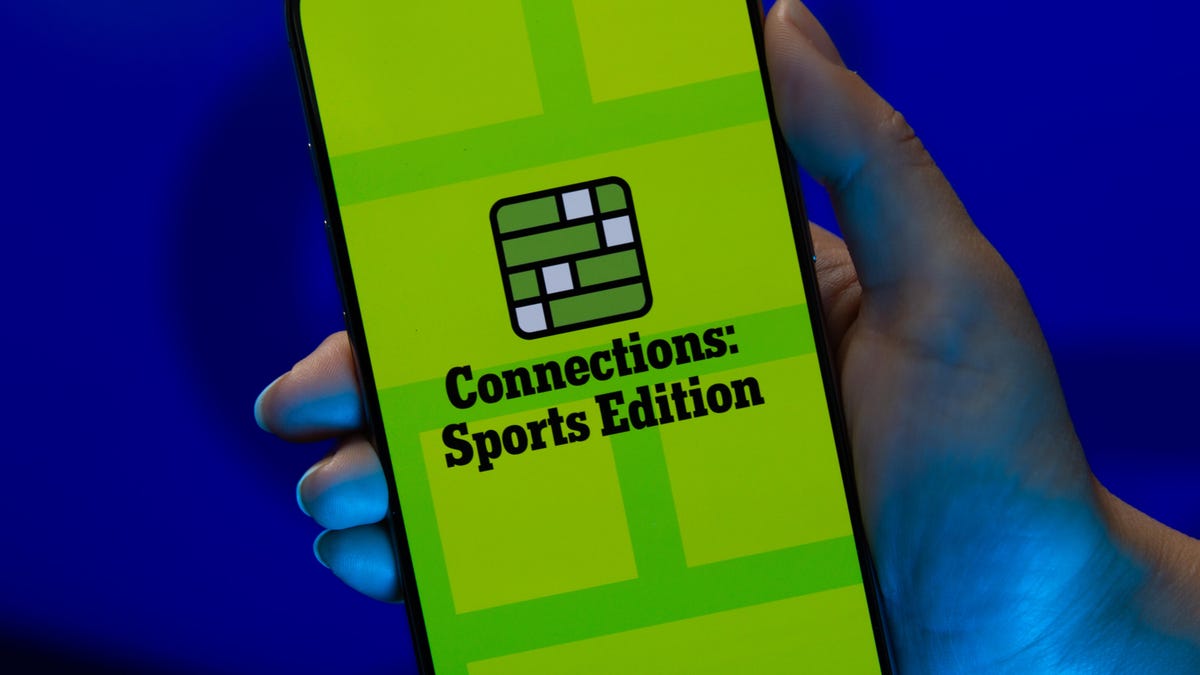
Looking for the most recent regular Connections answers? Click here for today’s Connections hints, as well as our daily answers and hints for The New York Times Mini Crossword, Wordle and Strands puzzles.
Today’s Connections: Sports Edition is a tough one. But if you’re a shoe junkie, you might ace the blue category. If you’re struggling but still want to solve it, read on for hints and the answers.
Connections: Sports Edition is published by The Athletic, the subscription-based sports journalism site owned by the Times. It doesn’t show up in the NYT Games app but appears in The Athletic’s own app. Or you can play it for free online.
Read more: NYT Connections: Sports Edition Puzzle Comes Out of Beta
Hints for today’s Connections: Sports Edition groups
Here are four hints for the groupings in today’s Connections: Sports Edition puzzle, ranked from the easiest yellow group to the tough (and sometimes bizarre) purple group.
Yellow group hint: Baseball grouping.
Green group hint: You might do this to a door.
Blue group hint: Just do it.
Purple group hint: Not real coaches, but…
Answers for today’s Connections: Sports Edition groups
Yellow group: NL East teams.
Green group: Synonyms of slam, in basketball.
Blue group: Nike shoes.
Purple group: Actors who played football coaches.
Read more: Wordle Cheat Sheet: Here Are the Most Popular Letters Used in English Words
What are today’s Connections: Sports Edition answers?
The yellow words in today’s Connections
The theme is NL East teams. The four answers are Atlanta, Miami, New York and Philadelphia.
The green words in today’s Connections
The theme is synonyms of slam, in basketball. The four answers are drunk, flush, jam and stuff.
The blue words in today’s Connections
The theme is Nike shoes. The four answers are Blazer, Cortez, Pegasus and Shox.
The purple words in today’s Connections
The theme is actors who played football coaches. The four answers are Pacino, Thornton, Washington and Winkler.
-

 Technologies3 года ago
Technologies3 года agoTech Companies Need to Be Held Accountable for Security, Experts Say
-

 Technologies3 года ago
Technologies3 года agoBest Handheld Game Console in 2023
-

 Technologies3 года ago
Technologies3 года agoTighten Up Your VR Game With the Best Head Straps for Quest 2
-

 Technologies4 года ago
Technologies4 года agoVerum, Wickr and Threema: next generation secured messengers
-

 Technologies4 года ago
Technologies4 года agoGoogle to require vaccinations as Silicon Valley rethinks return-to-office policies
-

 Technologies4 года ago
Technologies4 года agoBlack Friday 2021: The best deals on TVs, headphones, kitchenware, and more
-

 Technologies4 года ago
Technologies4 года agoOlivia Harlan Dekker for Verum Messenger
-

 Technologies4 года ago
Technologies4 года agoiPhone 13 event: How to watch Apple’s big announcement tomorrow



